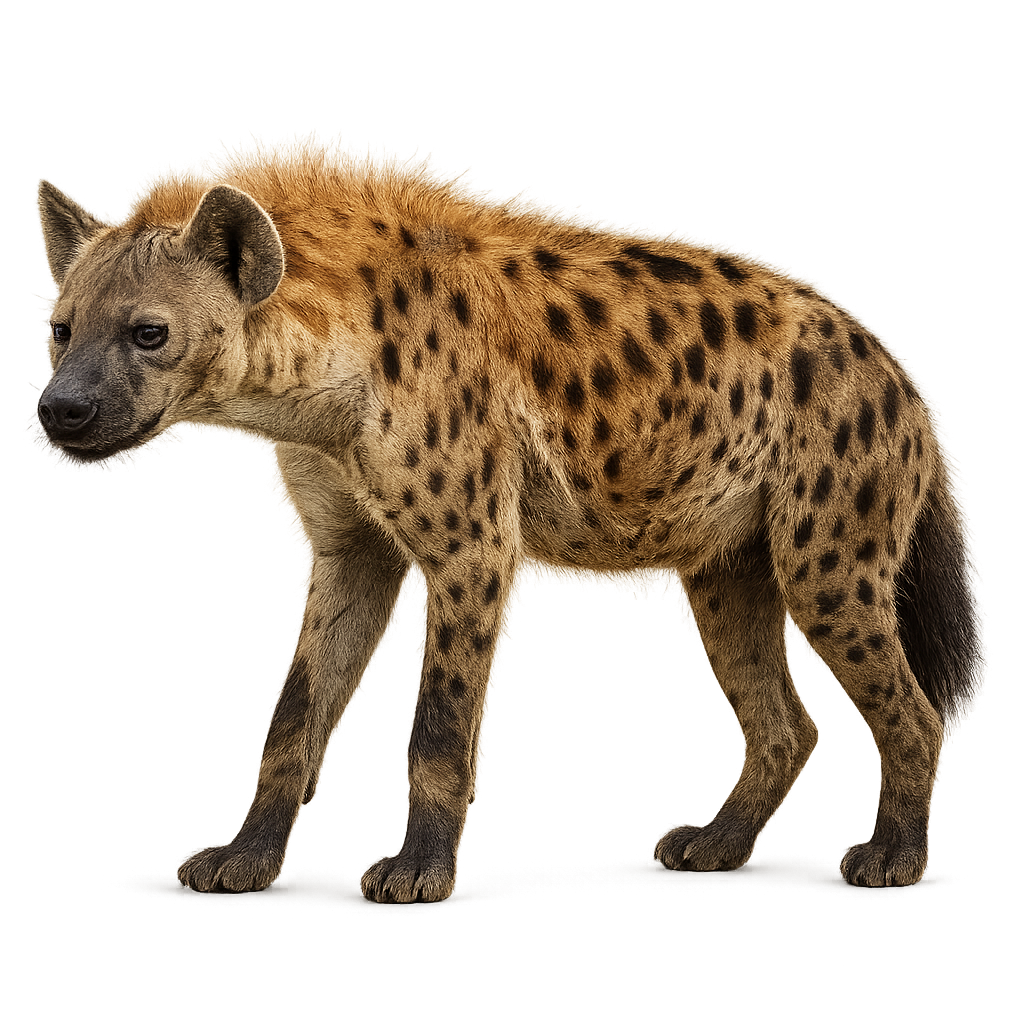Your wildlife photography guide.
Explore the spotted hyena in detail, study its behavior, prepare your shots.
Where to observe and photograph the spotted hyena in the wild
Learn where and when to spot the spotted hyena in the wild, how to identify the species based on distinctive features, and what natural environments it inhabits. The WildlifePhotographer app offers tailored photography tips that reflect the spotted hyena’s behavior, helping you capture better wildlife images. Explore the full species profile for key information including description, habitat, active periods, and approach techniques.
Spotted Hyena
Scientific name: Crocuta crocuta

IUCN Status: Least Concern
Family: HYAENIDAE
Group: Mammals
Sensitivity to human approach: Suspicious
Minimum approach distance: 50 m
Rut period: January to June
Gestation: 110-120 jours
Births: April to October
Habitat:
Open savannas and grassy plains
Activity period :
Mainly active at night, generally discreet during the day.
Identification and description:
The Spotted Hyena is a robust carnivore, known for its complex social behavior and distinctive call. It measures between 90 and 150 cm in length, with a shoulder height of about 70 cm, and weighs between 40 and 80 kg. Its coat is characterized by black and brown spots on a yellow-gray background, giving it a unique appearance. The Spotted Hyena primarily inhabits savannas, open grasslands, and wooded areas in sub-Saharan Africa, where it forms large clans organized around a strict hierarchy. It is primarily carnivorous, feeding on large prey such as gazelles and zebras, but it is also an opportunistic scavenger, feeding on carcasses of animals killed by other predators. It is an effective hunter, using group strategies to capture prey. Although the species is relatively abundant, it is sometimes viewed negatively due to its reputation as a scavenger, but it plays an important role in ecosystems by eliminating carcasses and regulating animal populations.
Recommended lens:
300 mm – adjust based on distance, desired framing (portrait or habitat), and approach conditions.
Photography tips:
Approach slowly and discreetly, using a telephoto lens, as hyenas can be quite wary and will quickly move away if they feel threatened.
Photograph early in the morning or late in the afternoon, when soft light enhances their activity, often while hunting, feeding, or socializing in groups.
Capture moments of natural behavior: Spotted hyenas are social hunters and can be photographed while hunting or resting in open areas or shade.
Be patient and respectful: Hyenas spend a lot of time moving in groups, so wait for moments when they are engaged in natural activity without disturbing them.
Respect their natural habitat and avoid disturbing their social or hunting behaviors. Do not force an encounter, and follow local conservation rules to preserve this vital species in ecosystems.
The WildlifePhotographer App is coming soon!
Be the first to explore the best nature spots, track rutting seasons, log your observations, and observe more wildlife.
Already 1 449 wildlife lovers subscribed worldwide

